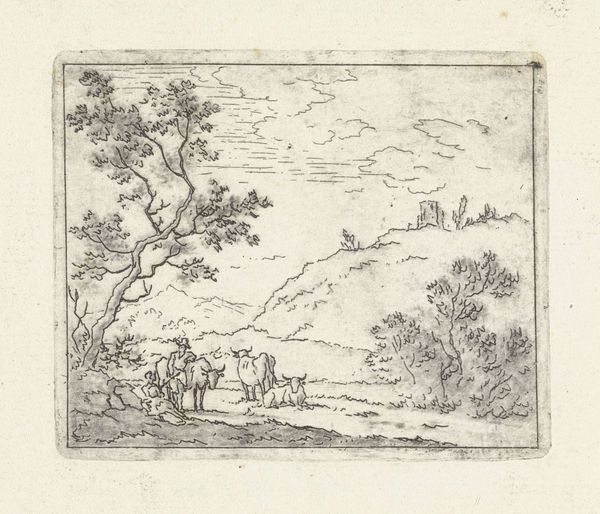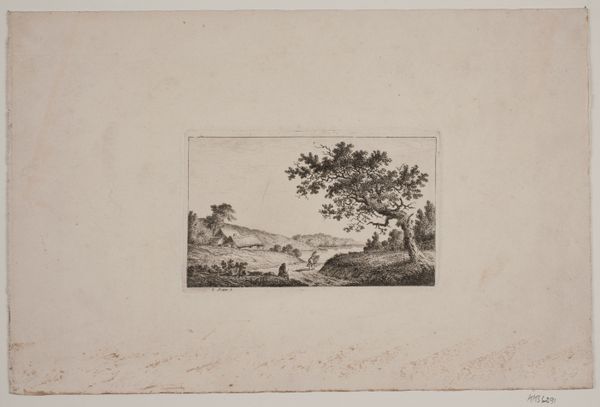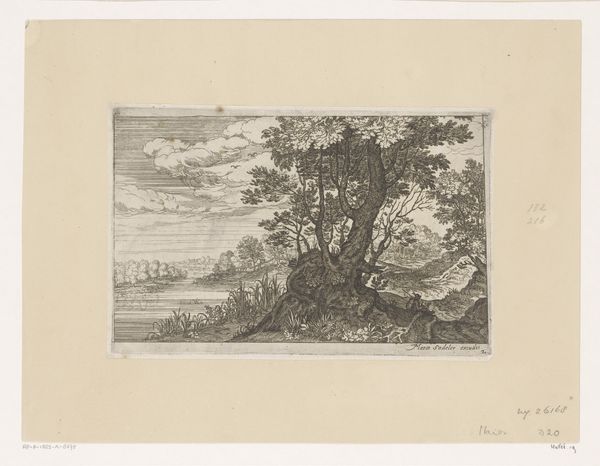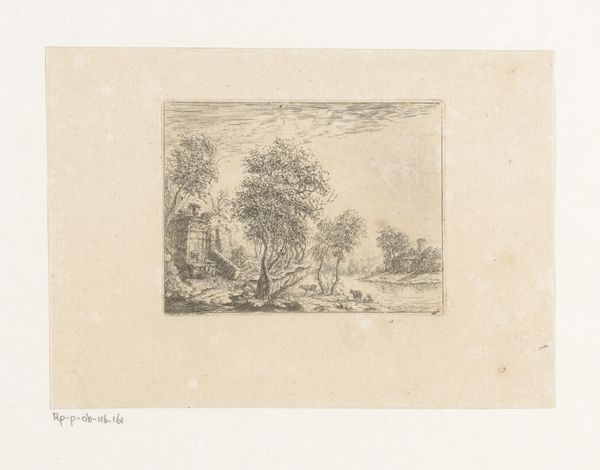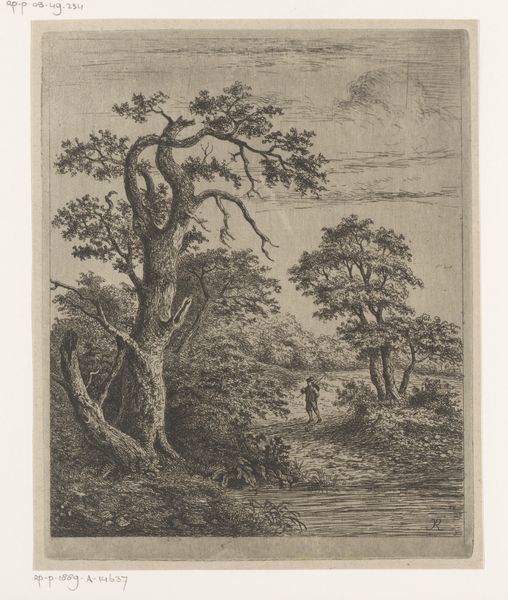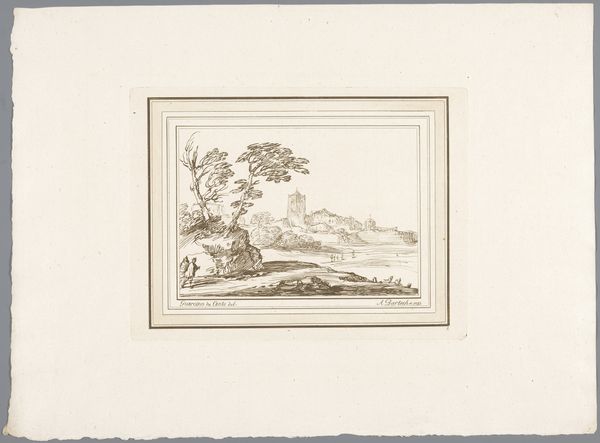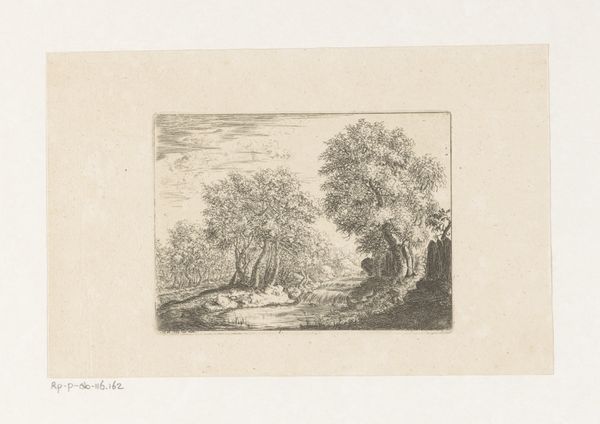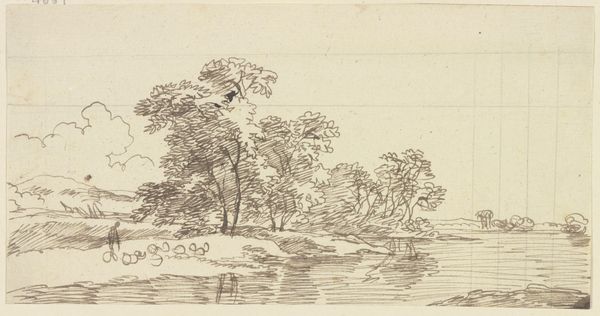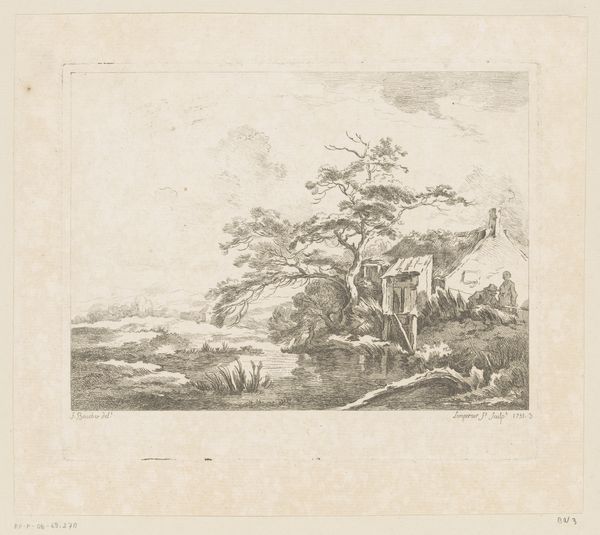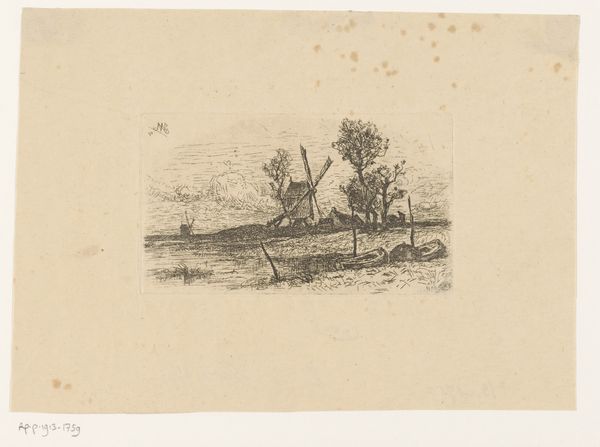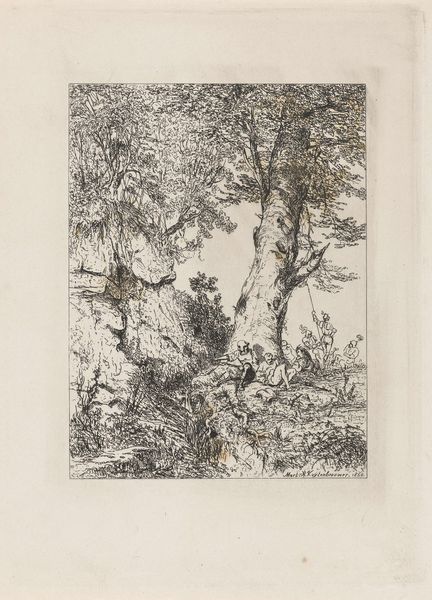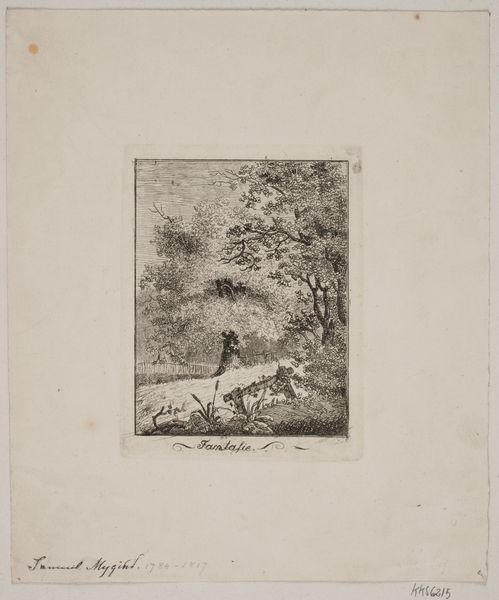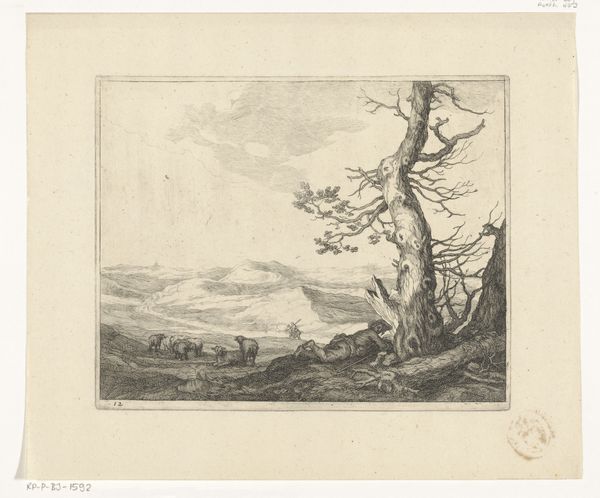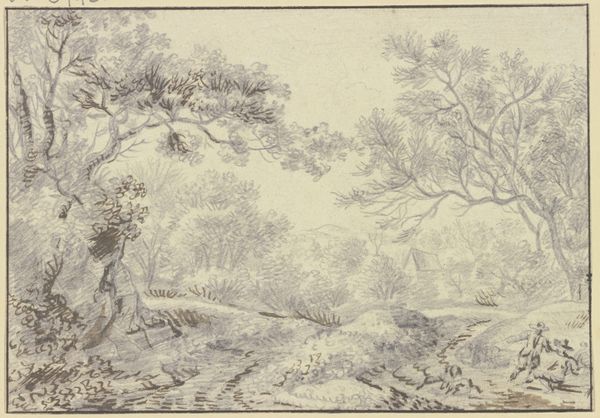
print, etching
# print
#
etching
#
landscape
Dimensions: 50 mm (height) x 76 mm (width) (plademaal)
Curator: Here we have "Landskab", an etching created around 1780 by Johan Bülow. The work is held here at the SMK, the Statens Museum for Kunst. Editor: It feels miniature, almost like a world captured inside a locket. The stark black lines create an intimate scene, quite charming in its simplicity. Curator: Charming indeed, but the etching’s formal composition is quite deliberate. Notice how Bülow uses stark contrasts in the foreground with the shadowed thicket and the lean of the trees, gradually softening to render a serene landscape further afield. The textural variations he achieves through line work alone are rather masterful. Editor: True, but these pastoral scenes became hugely popular at that time as an idyllic refuge for the bourgeoise classes escaping crowded urban life. How much did they shape the way that people idealized country living, turning farms into aesthetic playthings divorced from agrarian reality? Curator: While such works often did gloss over socio-economic realities, one cannot dismiss the careful artistry at play here. Look closely at the line variations—thicker, bolder lines defining near objects, becoming fainter and finer as distance increases. The whole image is an exploration of tonal value within a restricted palette. Editor: Perhaps, but even the restricted palette contributes to its function. The high-contrast and lack of color contributes to a feeling of a place remembered in a way that can be disseminated widely and at little cost. These artworks were tools in crafting particular nationalistic narratives of homeland rooted in nature. Curator: You offer an important perspective. Perhaps by understanding the forces behind the rise of this aesthetic we come to respect more fully what is on the surface in a small but well wrought landscape. Editor: Indeed, the conversation allows us to connect a delicate print to powerful shifts in society's desires and how artists shaped those visions of what nature could be.
Comments
No comments
Be the first to comment and join the conversation on the ultimate creative platform.
